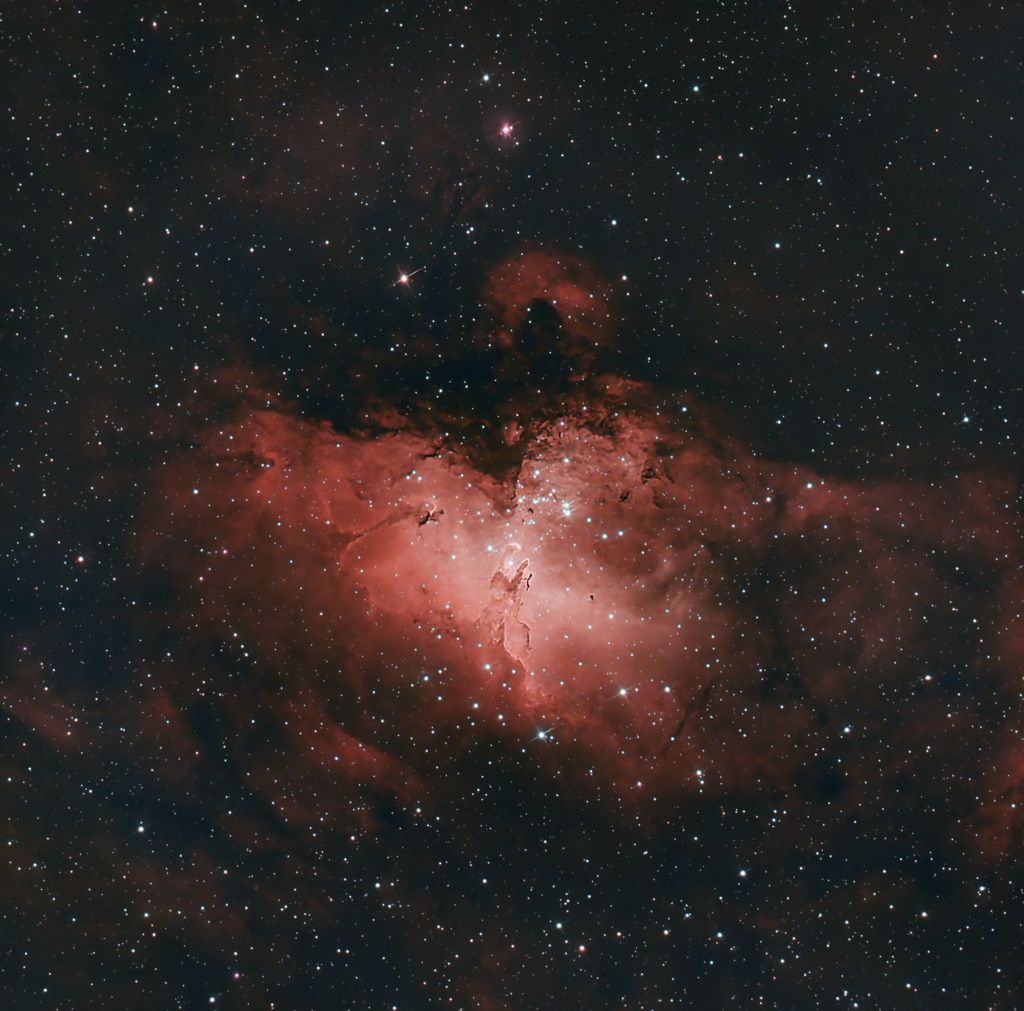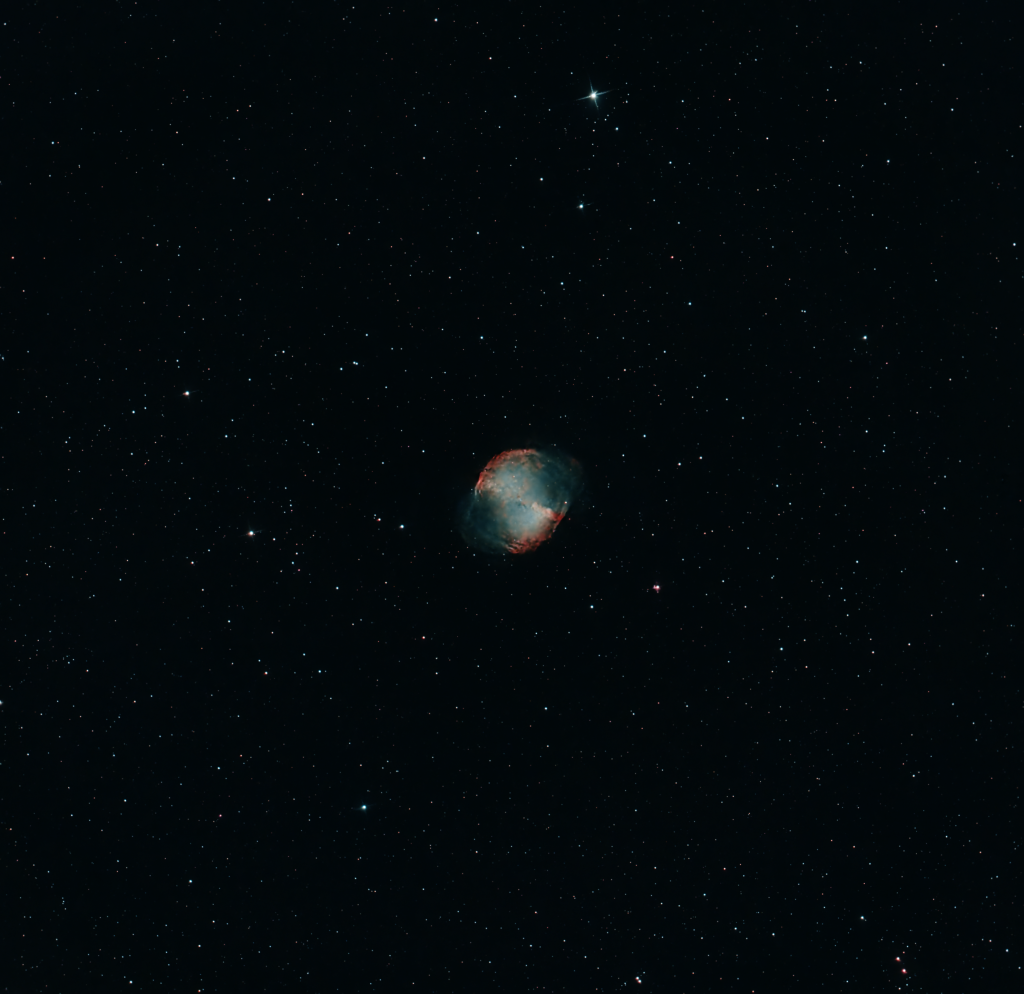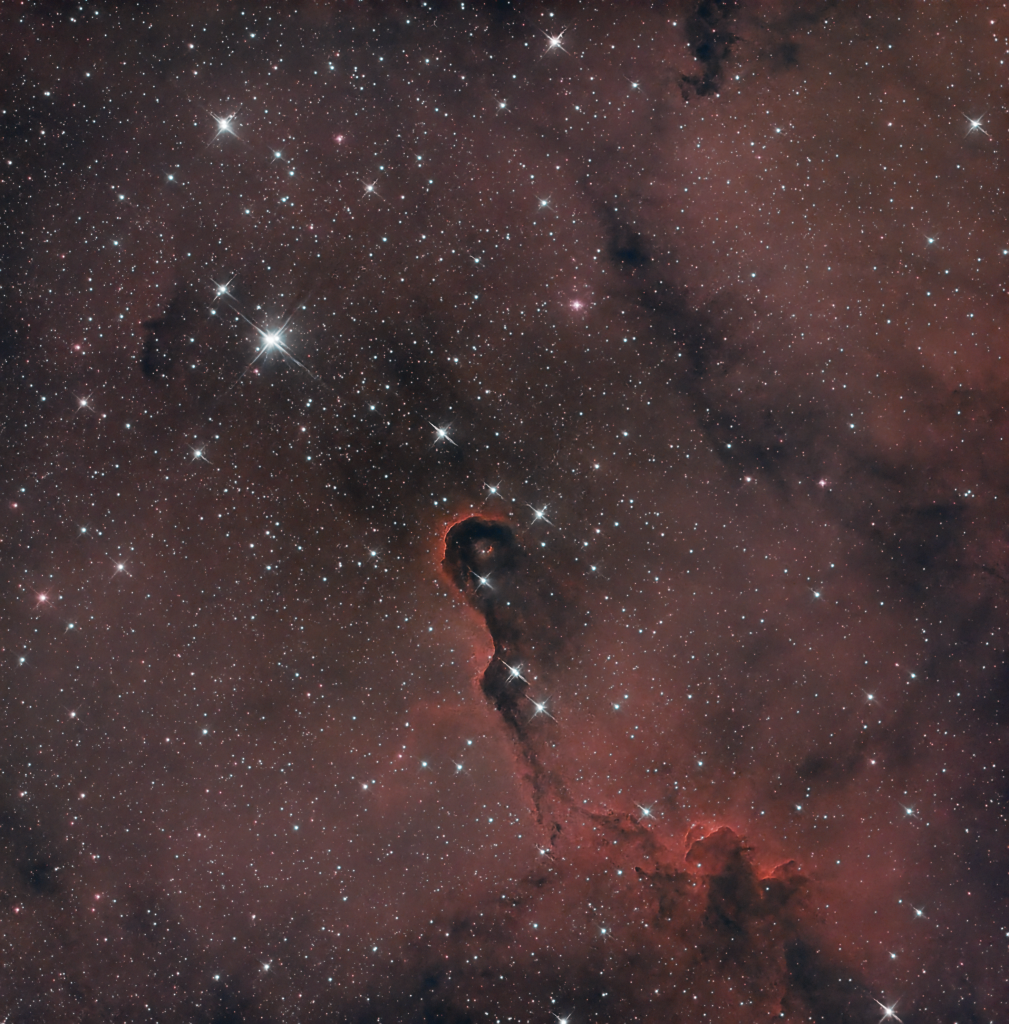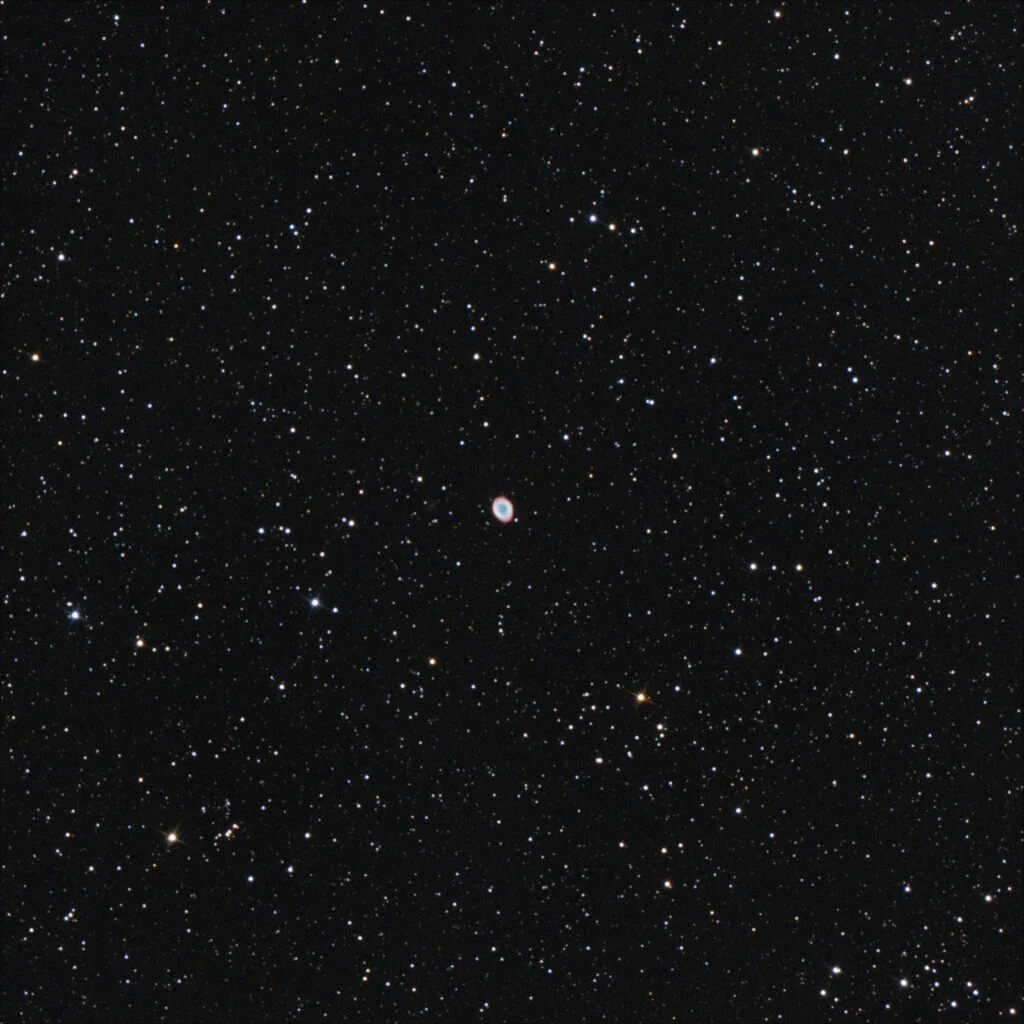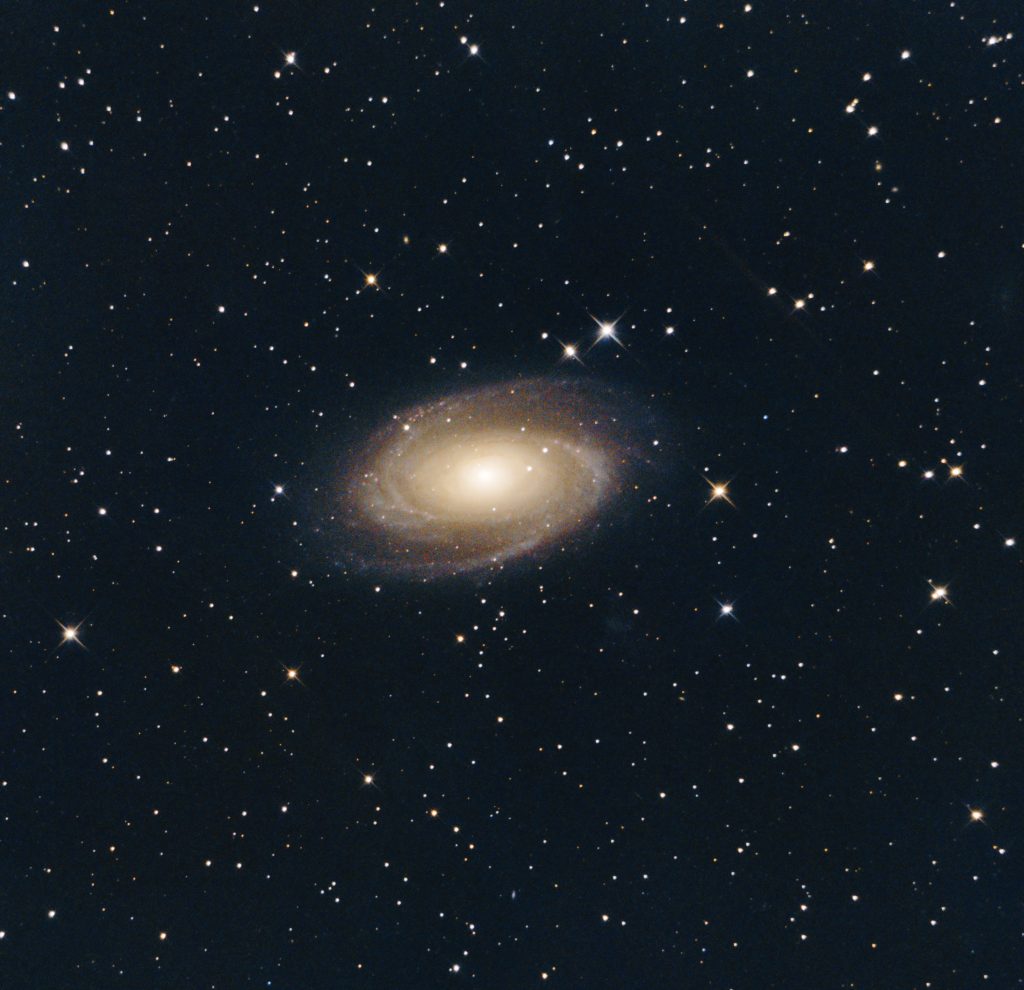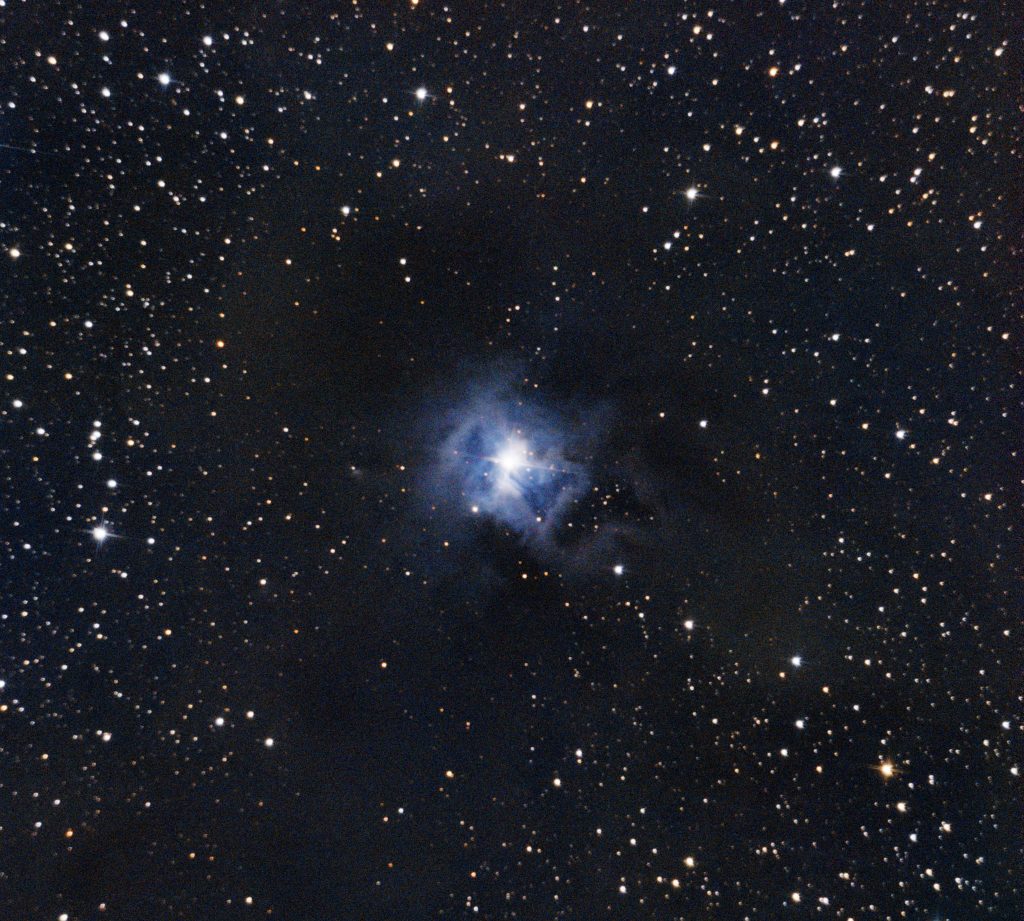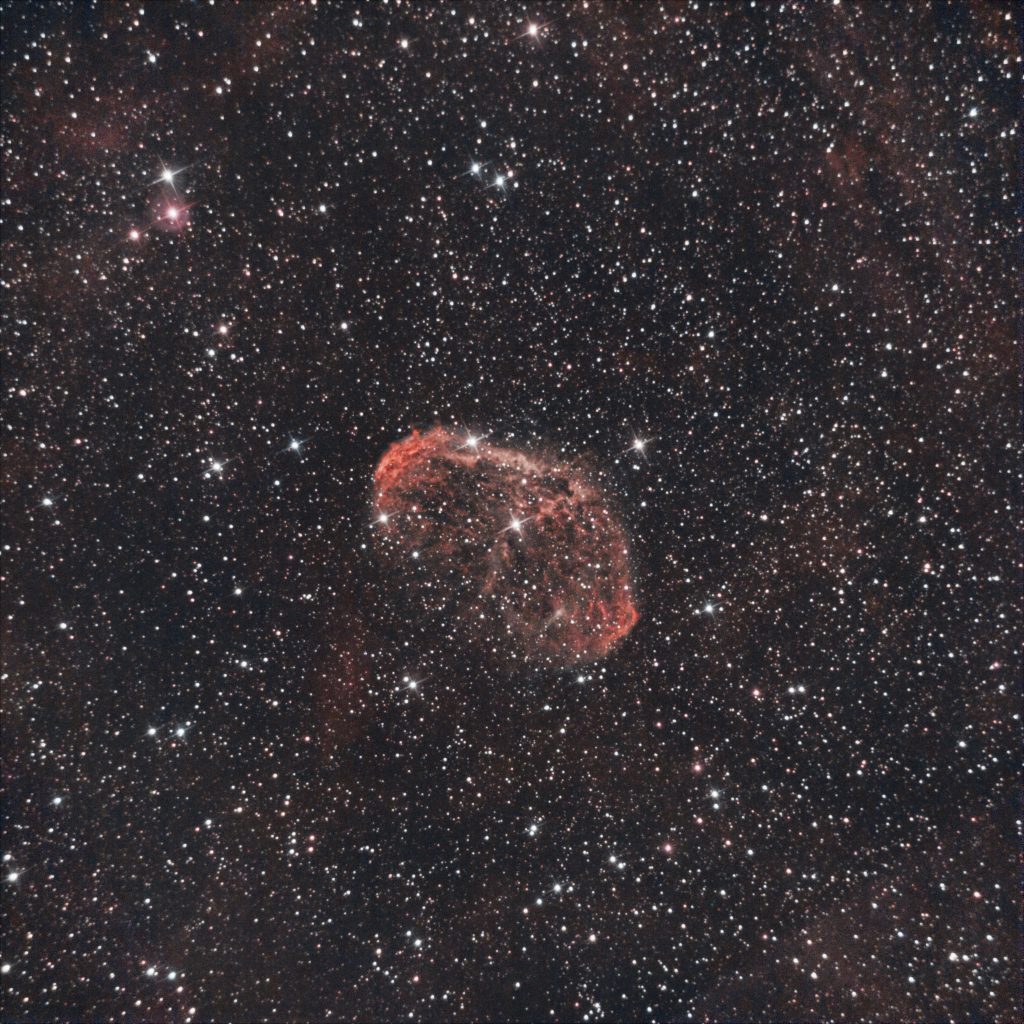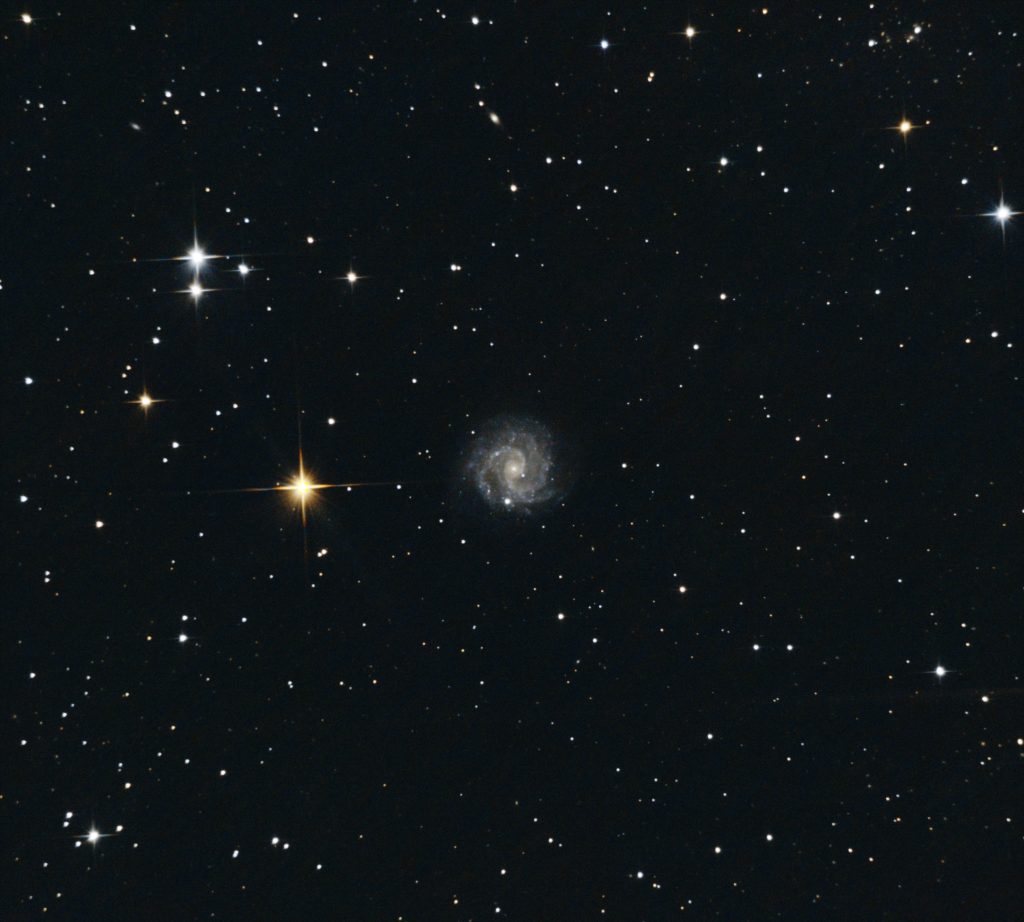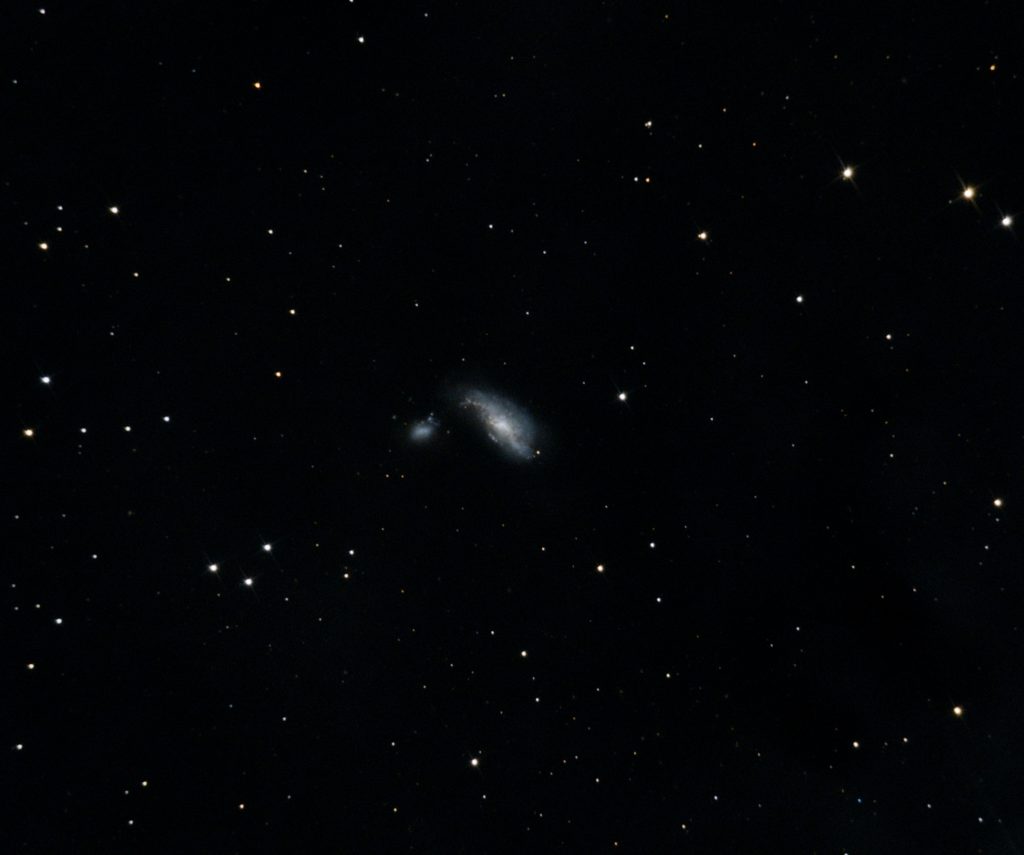The Pillars of Creation
At my latitude I wasn’t really sure how well this would go. The Eagle Nebula is sitting in the constellation Serpens, which for me means aiming my telescope South, which also means the glow of one of the busiest highways in the country. I managed to get around 2.5 hours of data in the end between 1AM-4AM. I might revisit this object a few times in the coming weeks and months.
This nebula is most known for the Pillars of Creation, huge towers of gas and dust, imaged by the Hubble ST in 1995 resulting in what’s probably its most popular image. Recently it was also revisited by the James Webb ST.
